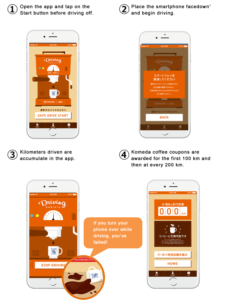– By David Brown –
Achieving safer driving on our roads has often been seen as telling drivers what not to do, threatening them that they will get caught and fined for doing the wrong thing, or scaring them with stories of how they could hurt themselves.
The contribution of new technology to this “controlling” approach is best shown by the humorous Superbowl advertisement for Hyundai’s Genesis luxury brand. It portrays a story of when a father meets a young man who is taking his daughter out on a date. The protective dad seems to be very generous in lending the young man his new prestige vehicle. The reality is that the Genesis has a tracking device and the father storks the couple the entire time.
There are some hard lessons to be learnt about driving safely but there is an emerging trend to reward good driving, not just penalising bad behaviour.
In Victoria they have the Free Licence Scheme which rewards young drivers who maintain a good driving record while on their Ps. Victorian drivers under 25 years old with no traffic-related offences can be eligible for a free three-year driver licence.
Modern technology is giving more opportunity to record what drivers are doing. Again the initial emphasis has been on identifying bad behaviour such as systems that tell parents when their children are speeding or doing other anti-social behaviours. But the potential to identify good behaviour is also coming to the fore.
In Japan they have launched an app-based initiative called Driving Barista that aims to reduce distracted driving crashes using coffee as an incentive. The project is a partnership between Toyota, Komeda (the coffee company, not the Swedish pop/indie band) and KDDI (a telecommunications company).
They are focusing their attention on the Aichi Prefecture that has had the highest rate of traffic fatalities in Japan for 13 consecutive years. In 2015 there were over 44,000 traffic accidents that resulted in injuries or deaths and over 50,000 arrests involving the use of smartphones while driving.
The Aichi Prefecture is also the location of Toyota City.
The partnership reports that according to one survey, approximately 60% of respondents said they use their smartphones while driving, with approximately half of these respondents keeping only one hand on the steering wheel.
So how does this incentive scheme work? Using the gyro sensor to judge the tilt of the smartphone body and the GPS to determine the distance driven, the application measures the distance the driver has travelled while leaving the smartphone facedown. When the cumulative distance reaches 100km the first time, and every 200km thereafter, the driver can receive a coupon for a cup of blended or iced coffee at a Komeda Coffee Shop.
It does not work if the phone is sitting upright in a cup holder. This is critical because when the phone is face down you cannot use it.
But as far as fleet operations are concerned, can employees focus on outcomes that are good for the business? There are some indications that this is the case. When the NSW Insurance and Motoring organisation, the NRMA, bought some hybrid cars for their home insurance assessors, a competition developed to see who could get the longest distance from a tank of petrol. I understand that it reached at least 1,300 kilometres.
Fleet management will be able to measure much more information about how their cars are being used in the future. The issue is whether to just play Big Brother and jump on any negativity and/or look for affirmative ways to encourage positive behaviour.






